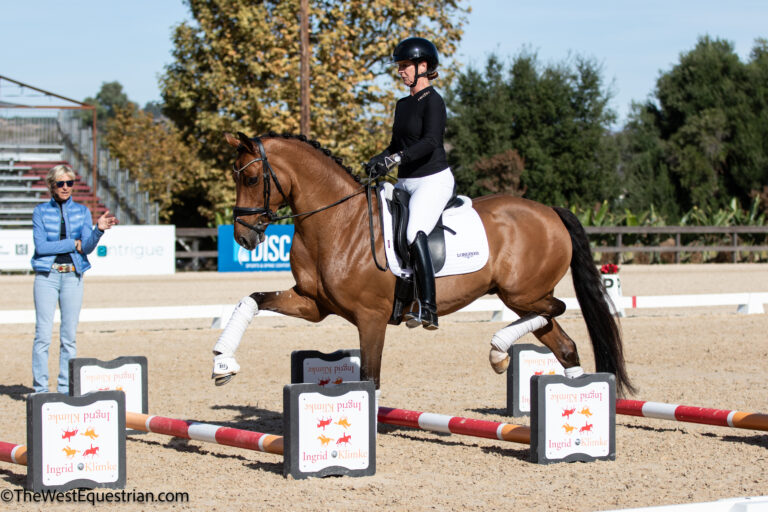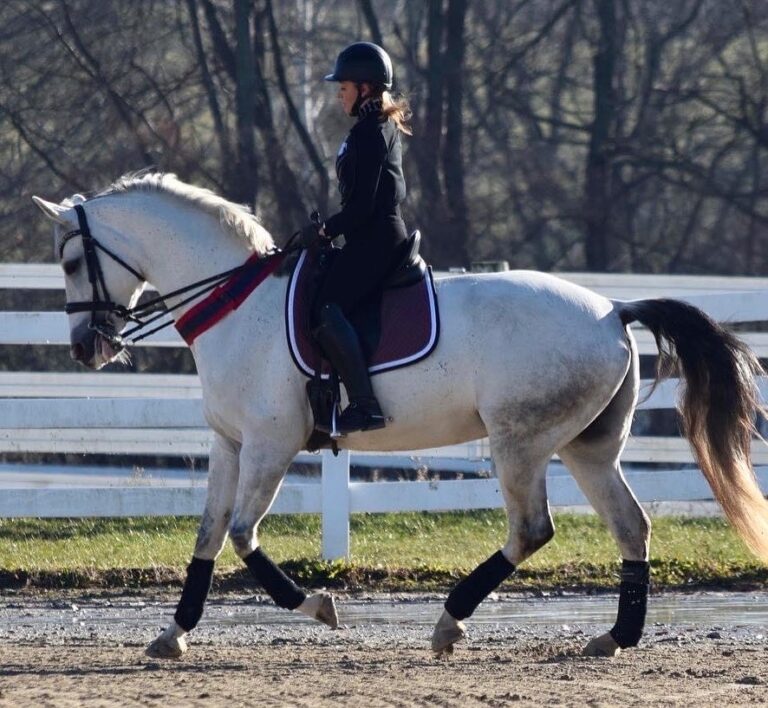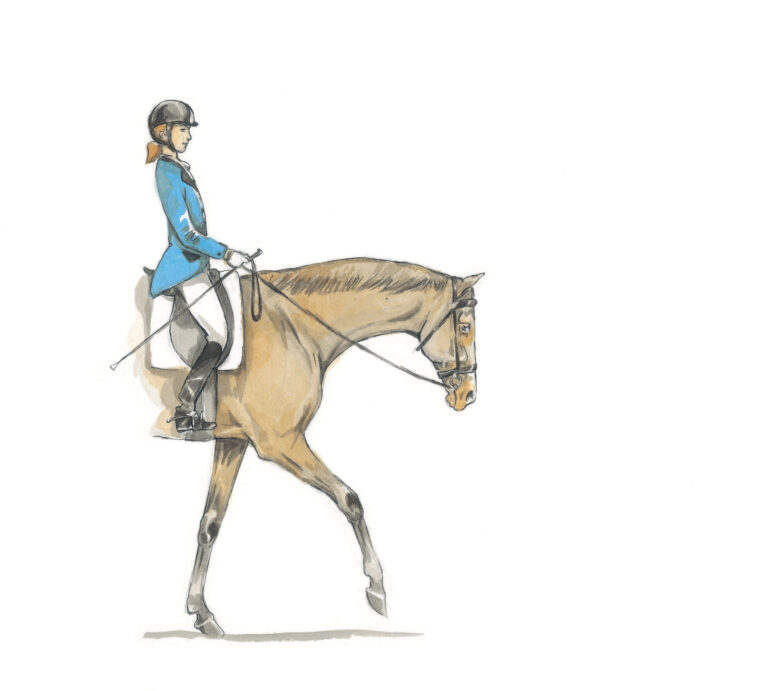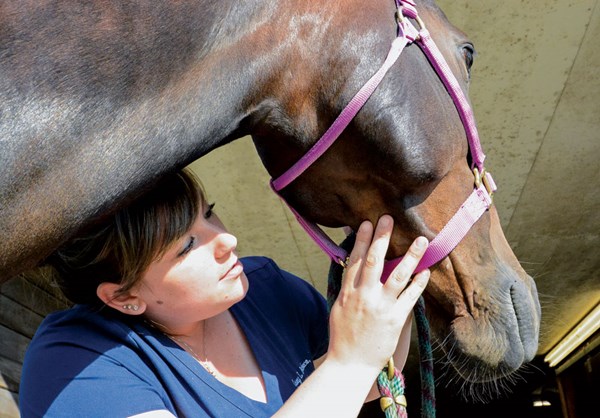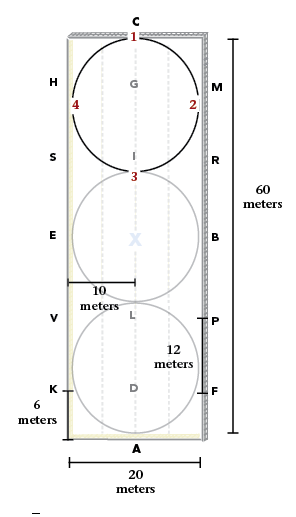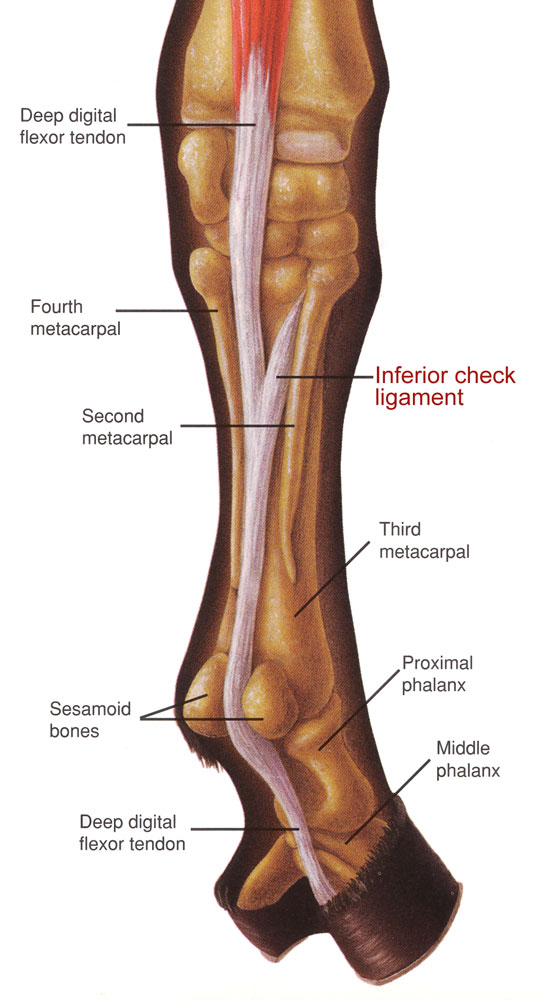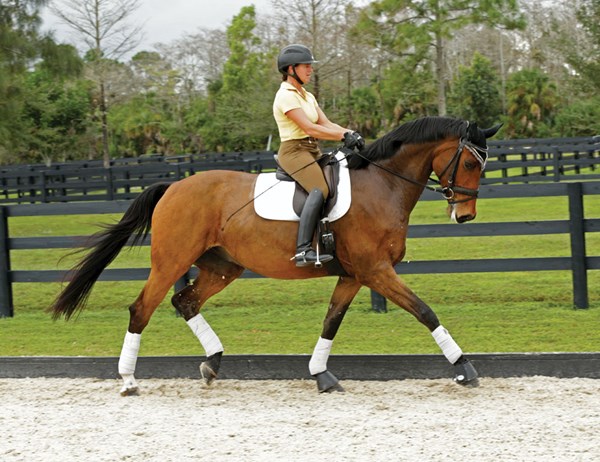It’s a basic tenet of dressage showing that judges can see completely different things at varied positions, such as from C versus from B on the long side. I recently had an unusual view from either of those and gained a new perspective of an issue that plagues riders at First Level.
I was doing a narrated “Ride on the Side” from a berm opposite H for a large class at First Level Test 2. From this raised position, I got a great view of the 15-meter canter circle at P or V that leads into the canter lengthenings down the long side. What I (and my auditors) could clearly see was that many of the riders were asking for the lengthening to start during the last stride of the circle.
The effect of this was that the horses were crooked during the entire lengthening, carrying their haunches to the inside track on the long side, since the position at the start stayed that way. I have all too often seen crooked lengthenings, but watching the test from above made it doubly clear that the problem usually starts before the lengthening itself.
This issue will affect the score in two ways. First, being crooked at the start will restrict the amplitude of his stride. Second, holding the haunches to the inside is very easy for the judge to see. This means a double hit on the score for that movement, and those lengthenings happen to have a coefficient. It will have a serious impact on the final score, possibly to the tune of a couple of percentage points.
So, how can you fix this? First, be aware of whether your horse is carrying his haunches to the inside of the 15-meter circle to begin with. Next, wait for a step or two on the long side, after the circle ends, to make sure your horse is straight before starting the lengthening. Then, if you can, ride both the circle and the lengthening in a shoulder-fore position, with clear control of the outside shoulder, which will both keep the horse straighter and also allow for better reach at the start of the lengthening.
Actually, this concept of a straight step before any transition and also before any lateral movement carries through all the way to Grand Prix. It takes some discipline and patience on the part of the rider to do that straight step before a transition or before going sideways, but it makes what comes next so much easier for the horse. This is especially important for a horse that tends to anticipate a transition or a lateral movement, because he starts off before his balance is really secure.


